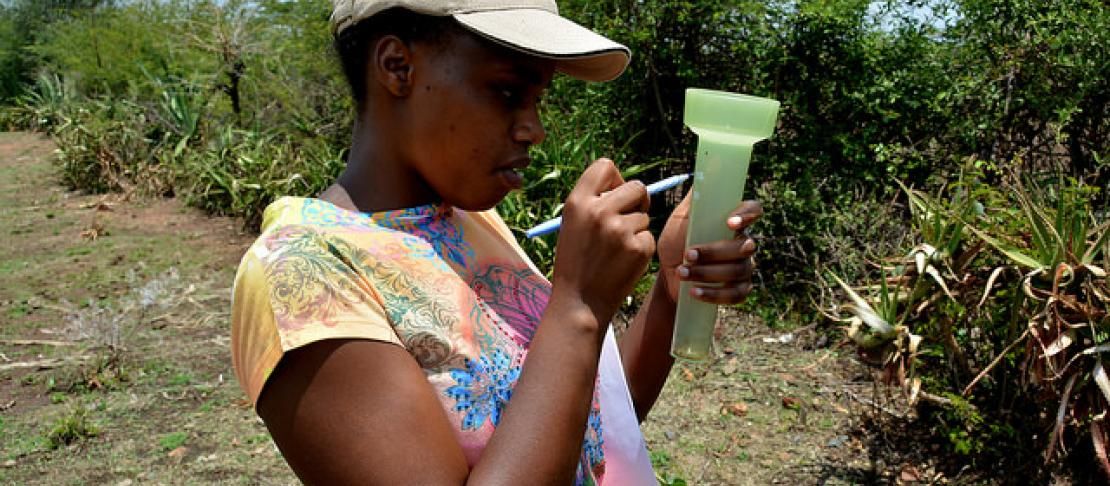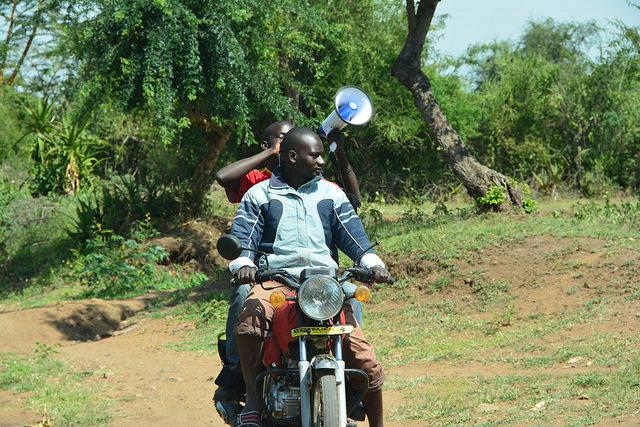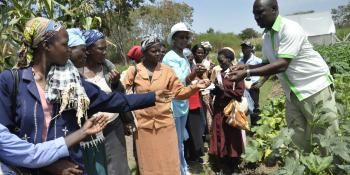Making the most of climate information for community-based adaptation

Communicating climate information to local communities needs to be revisited. Cultural issues such as language, indigenous as well as technical knowledge must be carefully considered and incorporated.
Over 400 participants during the 9th Conference on Community-Based Adaptation to climate change (CBA9) held in Nairobi, Kenya debated about the potential loss in translation of climate information, especially in Africa where most of the population is not literate in English or French. This discussion was held during a parallel session on climate information services for effective adaptation on 27th April 2015.
There are over 3,000 cultural languages spoken natively in Africa with English and French used as business languages across the continent. About 38% of the adult population in Africa, lack the basic literacy and numeracy skills. In fact, there are some countries with illiteracy levels higher than 70% such as Burkina Faso, South Sudan, Niger, Mali, Chad, Somalia, Ethiopia, Guinea and Benin. Women account for more than 60% of the continent’s adult illiterate population. Scientific climate information in Africa is usually in English and French. Subsequently, this information has to be downscaled and translated into appropriate cultural languages. This means that the potential of losing critical climate information during translation is very high.
The importance of climate information
Information on climate change and variability for Africa’s population is becoming increasingly important as the continent grapples with other stressors such as increasing population, rapid urbanisation, environmental and natural resource degradation. In the agriculture sector that employs more than 60% of Africa’s population and contributes significantly to countries’ gross domestic product (GDP), availability and access to climate information will decrease the uncertainty that farmers face in decision making. This will enable them to start engaging in adaptation and risk management strategies eventually building agricultural resilience and improving their livelihoods.
“Climate information generated by different stakeholders (local weather scientists, traditional weather forecasters, pastoralists, veterinarians and extension agents) at local level will be easier to translate into our local Maasai language compared to data collected at a global scale. This data is also more useful to us, especially our women who are transitioning into vegetable production and do not speak English or Kiswahili languages”, Maasai elder, CBA9 2015.
Effective communication tools and channels are essential in making climate information accessible and usable to local communities in languages that they can understand. The challenges that local communities face in understanding climate information is not only related to language but the information is often communicated in graphs, pie-charts, models and percentages, which can be confusing to some. This might create a widespread lack of confidence in climate information in local communities and especially among women.

CLIMATE INFORMATION WILL BE better UNDERSTOOD AND ACCEPTED IF THE MODE OF COMMUNICATION IS CAREFULLY SELECTED. photo: S.KILUNGU (ccafs)
"Translating and communicating climate information will be useful to the local community if indigenous technical knowledge is combined with simplified scientific knowledge. In this regard, the climate information will be familiar and easily understood and acceptable to the local community because their own forecasts collected in the local environment using local languages was considered” noted one participant from Benin.
The reverse, that is, losing meaning of climate information from local community back to scientists can also occur. The precise meaning of words contained in climate information can be misinterpreted depending on the local language being used. For example, the words ‘climate change’ translated into Kiswahili, a common language in four east African countries is ‘mabadiliko ya tabia nchi’ can literally mean “a country’s behavioral change”.
“As a development worker operating amongst communities whose local language I do not know, I find it extremely difficult to discuss such terms as ‘climate change’ using their local language. I do engage a translator but I have no idea whether she is communicating the right message. When a community member asks a question, and it is translated back to me, I am not sure that the correct translation was done. Furthermore, we share climate information to farmers through radios and on phones using English and Luganda languages. We have not conducted an impact assessment to know who is using the information and whether it is understood”, reported one participant.
There are many other potential problem areas where climate information can be confusing when translated into local languages including slang and the correct use of grammar and punctuation marks. To avoid this pitfall, a participant from Malawi said translating and communicating climate information requires one to be consistent, using the same words, slang and punctuation marks.
In conclusion, the current way of communicating climate information to local communities needs to be revisited. Literacy levels, socio-cultural environments combined with the community scepticism to “scientific outsiders” can contribute to low usage of climate information. Communicating climate information must be addressed in the interface between science languages (English, French among others) and the thousands of local languages across Africa. Governments that are ready to address climate change need to start organising climate information to include a wider range of sources (scientific and indigenous) and translation into different languages needs to be done consistently and through consultations with the local communities to ensure a common understanding of the key messages.
Watch Video: Fiona Percy summarises highlights from session - how climate information services can be a new resource for community based adaptation
Additional reading
To read more about integrating indigenous knowledge with scientific forecasts read CCAFS blog story
To read more about using local language radio to transmit climate information - read CCAFS blog story
Read other CBA9 Blogs:
How can climate-smart agriculture enhance food security and community-based adaptation?
Mary Nyasimi is a Gender Expert while Catherine Mungai is a Partnerships and Policy Specialist. They work for CCAFS East Africa.



